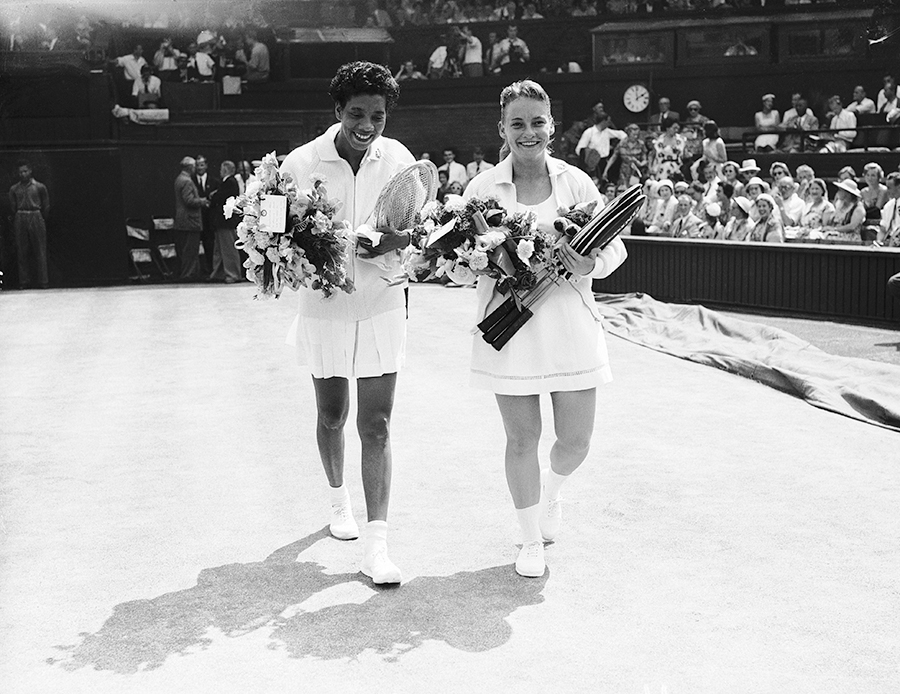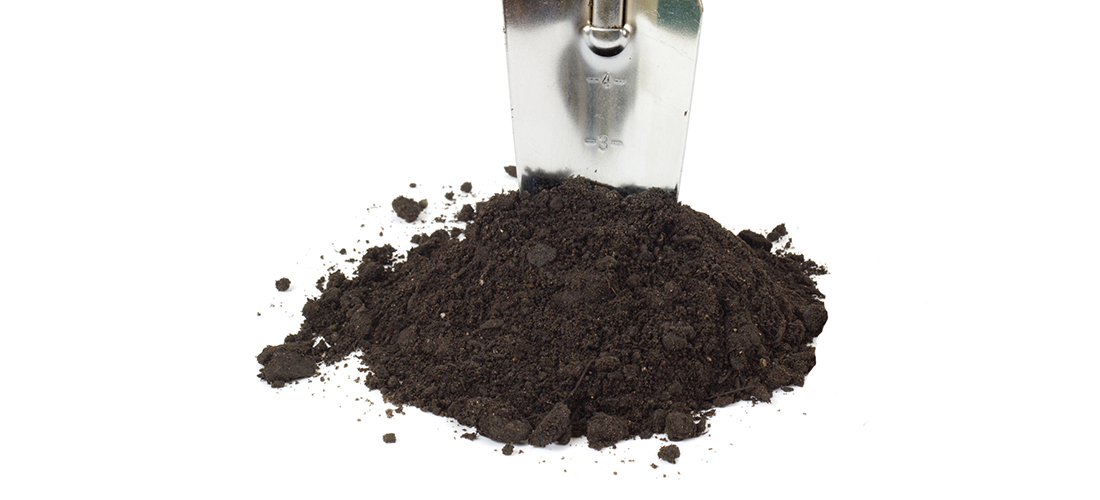Althea Gibson fought discrimination to become America’s first African-American tennis legend
By Kevin Maurer
Wimbledon’s Centre Court was sweltering as Althea Gibson stared across the net at Darlene Hard. It was 1957 and Gibson was on the verge of winning one of tennis’s most prestigious tournaments. As she faced off against Hard, the match was for more than the tournament’s singles crown. Gibson was on the verge of shattering tennis’s 80-year color barrier. Until then, blacks were only at tennis clubs to work.
Now, one of their own was on the verge of being a champion, thanks to help from a Wilmington doctor who mentored and coached Gibson to a championship — first on the clay courts of the French Open a year before — and now on the grass courts of Wimbledon.
Seeded number one, Gibson cut through her competition with an aggressive — described as “masculine” — style of tennis. The 5-foot, 11-inch Gibson could cover the court and kept the pressure on her opponent with thundering serves and volleys. Gibson described her own playing style as “aggressive, dynamic — and mean.” In front of 17,000 spectators, including Queen Elizabeth, Gibson routed Hard in 50 minutes in straight sets — 6-3, 6-2. Fans at Centre Court “raised only an apathetic cheer when the Queen presented her with a big gold salver and Darlene hugged her with sisterly enthusiasm,” according to a Sports Illustrated story written in 1957.
It didn’t seem to phase Gibson. Being champion was all that mattered.
“Who could have imagined? Who could have thought?” said Gibson during a 1988 ceremony at the Smithsonian’s National Museum of American History.
“Here stands before you a Negro woman, raised in Harlem, who went on to become a tennis player . . . and finally wind up being a world champion, in fact, the first black woman champion of this world. And believe it or not, I still am.”
Gibson was born in August 1927 in Silver, South Carolina, southeast of Columbia. She was three when she moved to Harlem in New York City. She grew up in the city, skipping school, hanging out in pool halls and sneaking drinks of her uncle’s whiskey. She used to ride the subway late into the night to avoid going home. Her family life was difficult. Her father beat her, even if, as Gibson said later, she deserved it. “Daddy would whip me,” she told ESPN. “I’m not talking about spankings.”
Sports became her refuge. Basketball first. Then paddle tennis. She didn’t get her first proper tennis racket until she was 13. But once she put the used racket in her hand, something clicked. She learned to play at the Cosmopolitan Tennis Club in Harlem and then quit high school to compete in American Tennis Association (ATA) tournaments. The ATA organized tournaments for black players, who were banned from the United States Lawn Tennis Association’s tournaments.
It was at the 1946 ATA finals in Ohio that her life changed forever. Dr. Hubert Eaton of Wilmington, North Carolina, and Dr. Robert Johnson of Lynchburg, Virginia, approached the then-18-year-old Althea Gibson with a deal: Gibson would live with Eaton in Wilmington and attend Williston, and train and travel to tournaments with Johnson in Lynchburg during the summers.
A tennis player in his own right, Eaton won the 1932 N.C. Inter-Scholastic Tennis Tournament in Winston-Salem. He knew talent when he saw it and needed a talent to break down the color barrier like Jackie Robinson did in baseball. Gibson was looked at as the “Great Black Hope” by her fans at the ATA. When Johnson asked her if she was interested in the deal, she volleyed the answer right back. “Who wouldn’t be interested in a deal like that?” she said, according to a 1982 feature in Tennis magazine.
Eaton was no stranger to the civil rights movement. He was spurred to fight for equality after he realized the court system had separate Bibles to swear in black and white witnesses. His daughter was the plaintiff in the 1964 lawsuit that desegregated schools in New Hanover County. He was also instrumental in desegregating the YMCA, Wilmington College, and the Municipal Golf Course.
But winning on the court wasn’t enough. They needed a player with good manners and demeanor so a white player could never impeach her character. Eaton helped Gibson with the social skills needed to face a segregated and often hostile tennis community, Eaton wrote in his memoir, Every Man Should Try. Gibson would later credit Eaton with helping her cultivate the grace and dignity she needed on and off the court. “No one would say anything to me because of the way I carried myself,” Gibson said. “Tennis was a game for ladies and gentleman, and I conducted myself in that manner.”

Wimbledon Championships – Ladies’ Singles – Final – Althea Gibson v Darlene Hard
The partnership worked, and Gibson dominated the ATA, winning 10 straight national championships. But the United States Lawn Tennis Association (USLTA) tournaments were still off limits to black players until Alice Marble, a white tennis player, wrote a scathing critique of the ban in American Lawn Tennis magazine:
“If tennis is a game for ladies and gentlemen it’s time we acted a little more like gentlepeople and less like sanctimonious hypocrites,” she wrote in a 1950 magazine story. Adding: “If Althea Gibson represents a challenge to the present crop of players, then it’s only fair that they meet this challenge on the courts.”
The magazine story forced the USLTA’s hand, and Gibson was admitted into the 1950 U.S. National tournament. She defeated Barbara Knapp in straight sets in her first match and was playing Louise Brough, a three-time Wimbledon champion, when a thunder storm stopped the match tied at one set apiece. During the storm, lightning struck a concrete eagle at the top of the stadium. Gibson took it as a good sign, saying “it may have been an omen that times were changing.”
The next day, Brough won three straight games to eliminate Gibson, but she’d competed. There was a crack in the barrier. For the next several years, Gibson worked her way up the ranks as she got familiar with the competition. Six years later, she took the French Open by defeating Angela Mortimer, the defending champion, 6-0, 12-10 but lost in the finals of the U.S. Nationals. It wasn’t until she shed the burden of breaking the color barrier that she came into her own as an athlete, she said. “I tried to feel responsibilities to Negroes, but that was a burden on my shoulders,” she said in 1957. “Now I’m playing tennis to please me, not them.”
1957 was her year.
First winning in Wimbledon in July, and then returning to the United States to win the U. S. Nationals in September at Forest Hills. Gibson also won the Wimbledon doubles tournament with Hard at Wimbledon and mixed doubles with Kurt Nielsen at Forest Hills.
The next year, she repeated her performance winning both Wimbledon and the U.S. Nationals and a doubles title at Wimbledon. She retired in 1958. She would rack up an impressive record — 16-1 at Wimbledon and 27-7 at the U.S. Nationals. Her overall record at Grand Slam events was 53-9. After her retirement, Gibson tried professional golf. While not a native, she is beloved in the Port City. In 2000, she was included on the Wilmington Walk of Fame and in 2010, the tennis complex at Empie Park was named in her honor. She also trained in Wilmington, working with Lenny Simpson, who mentored Arthur Ashe. She died in 2003 in New Jersey of respiratory failure after suffering a stroke and heart problems. She was 76.
Tennis may have let her in, but Gibson was still facing a nation that saw African-Americans as second-class citizens. Hotels refused to give her a room — even one hosting an event in her honor. But Gibson resisted calls to join the civil rights movement. “I have never regarded myself as a crusader,” she said in her 1958 autobiography, I Always Wanted to Be Somebody. “I don’t consciously beat the drums for any cause, not even the Negro in the United States.”
She may not have consciously been a crusader, but others see her legacy differently. “Her contribution to the civil rights movement was done with her tennis racket,” says Fran Gray, cofounder of the Althea Gibson Foundation, which teaches golf and tennis to urban youth.
The New York Times columnist William C. Rhoden argued in a 1977 story Gibson’s accomplishments were “revolutionary” for the black community. “Even to those Blacks who hadn’t the slightest idea of where or what Wimbledon was, her victory, like Jackie Robinson’s in baseball and Jack Johnson’s in boxing, proved again that Blacks, when given an opportunity, could compete at any level in American society,” he wrote.
Katrina Adams, the first African-American chief executive officer and president of the United States Tennis Association, called Gibson the “Jackie Robinson of tennis,” and praised her charisma and mental toughness for withstanding the competition on the court and the racism outside the stadium. “When she played at the US Lawn Tennis Association Championships that was a first,” she told the UK’s Independent. “What she did, to go on and win it two times, and to win Wimbledon twice, really opened the door and broke the barrier for people of her color to say: ‘Hey, I too can do this if I have an opportunity.’”
It would be a long time before a black woman would rule the tennis world again. But in 1999, Serena Williams won the U.S. Open and Venus Williams won Wimbledon in 2000. The Williams sisters were a call back to Gibson. Athletic and powerful, they were the modern versions of the legend, a fact not lost on the sisters. “I knew she was watching when Serena won the U.S. Open and she’s happy to see another black woman win in her lifetime,” Venus Williams said after winning Wimbledon. Knowing Gibson’s reputation, she would probably rather play Serena or Venus for the title. A match Rex Miller, the producer of a documentary about Gibson, would have liked: “Althea was a serve-and-volleyer; very, very aggressive; big wingspan; built more like Venus than Serena,” Miller said in a New York Times story. “Give Althea the same equipment, a little more coaching, time to get familiar with the modern game: It would have been a real matchup.”
Kevin Maurer is the author of nine books, including No Easy Day: The Firsthand Account of the Mission That Killed Osama Bin Laden.


